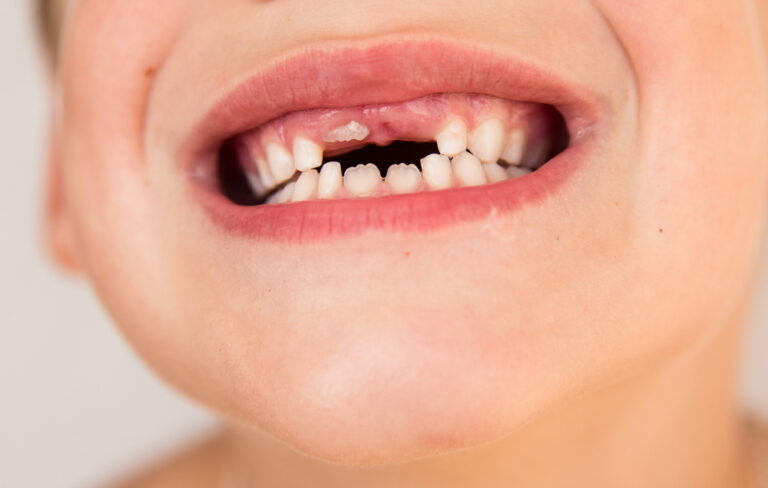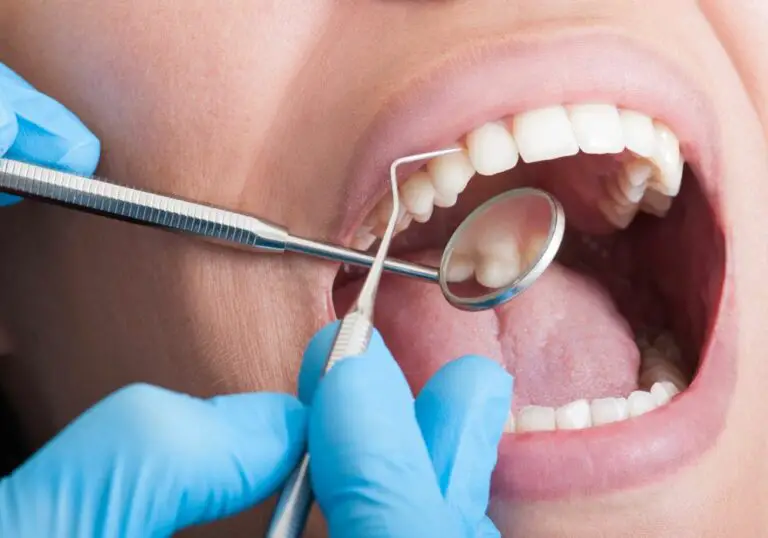Cavities on the bottom front teeth are not uncommon, though they tend to be less prevalent than cavities on the back teeth. Even so, cavities on the front teeth should be addressed to avoid more severe dental problems. Left untreated, a cavity can advance into the inner layers of the tooth, eventually reaching the nerve and blood vessels inside the tooth (known as a root canal infection). This is extremely painful and often requires a root canal treatment or extraction of the tooth.
For this reason, it’s important not to ignore cavities on the front teeth just because they are less visible. Any decay on the biting surfaces should be treated with a filling to prevent further damage. With prompt care, your dentist can help protect your front teeth and maintain your beautiful smile!
What causes cavities to form on bottom front teeth?
Cavities can be a nuisance, especially when they form on the bottom front teeth. Plaque buildup, which harbors harmful bacteria, can also contribute significantly to tooth decay in this area. This is where comprehensive dental care comes into play.
To better understand the factors leading to cavities on the bottom front teeth, it is essential to explore various contributing elements. There are several potential reasons cavities may develop on the bottom front teeth:
1. Inadequate oral hygiene
Insufficient brushing and flossing allows plaque—a sticky film of bacteria—to build up on teeth. The bacteria metabolize sugar and starch from foods, producing acid that demineralizes and decays the enamel. The bottom front teeth are especially prone because they have grooves and pits that can trap plaque. Thorough daily brushing and flossing removes plaque and helps prevent cavities.
2. Poor diet
Frequent consumption of sugary or starchy foods feeds the plaque bacteria and enables them to create more acid. This acid wears away at the enamel over time, leading to cavities. Limiting sugar intake and choosing tooth-healthy foods can help minimize your decay risk.
3. Dry mouth
Saliva naturally rinses the teeth, neutralizing acids and providing minerals like calcium that rebuild weakened areas. Certain health conditions, medications, and aging can cause inadequate saliva flow. The resulting dry mouth provides an environment where cavities thrive. Staying hydrated and asking your dentist about saliva substitutes can help.
4. Deep tooth grooves
The biting surfaces of front teeth have developmental grooves that can collect food debris and plaque. Thorough brushing is required to clean these grooves. If a groove is particularly deep, a dentist may recommend applying dental sealants to protect the area.
5. Orthodontic braces or aligners
Braces and aligners like Invisalign make oral hygiene more challenging. Food and plaque can become trapped around brackets, bands, and wires. Without diligent cleaning, cavities may occur in these stagnant areas, including on the bottom front teeth.
6. Low fluoride exposure
Fluoride strengthens enamel and limits demineralization from plaque acids. If your drinking water lacks fluoride or you don’t use fluoride toothpaste, your teeth will be more susceptible to cavities. Talk to your dentist about supplemental fluoride treatments.
What are the signs and symptoms of a cavity in bottom front teeth?
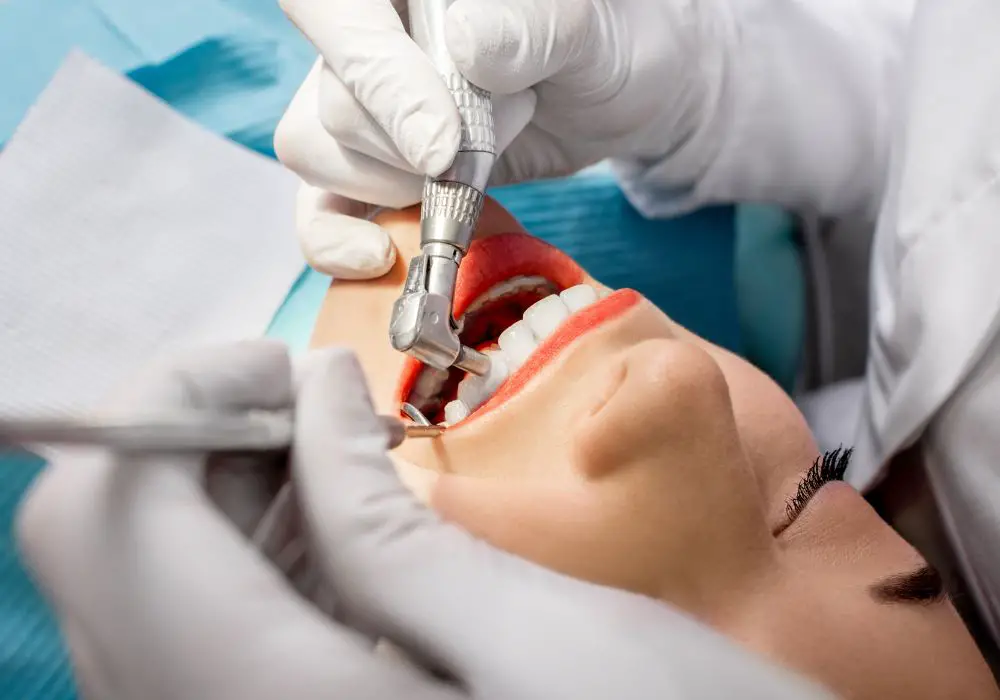
Early stage cavity symptoms:
- White, brown, or black spots on enamel surface
- Sensitivity to hot, cold, or sweet foods
- Temporary tooth pain that dissipates quickly
- Moderate stage cavity symptoms:
- Tooth discoloration
- Visible hole or pit in enamel
- Lingering sensitivity or pain when eating or drinking
- Pain in response to pressure on tooth
- Advanced stage cavity symptoms:
- Obvious cavities or holes
- Severe toothache ranging from mild to intense
- Pulsating pain or pain that wakes you from sleep
- Pain when biting down
- Tooth may feel loose, damaged, or fractured
- Swelling in nearby gums
Any symptoms of tooth decay warrant an examination by your dentist to assess the extent of the problem and provide appropriate treatment. Left too long, a cavity can irreversibly harm the tooth.
How are cavities on front teeth diagnosed?
Dentists use a variety of methods to check for cavities on front teeth:
Visual exam: The dentist carefully inspects all surfaces of front teeth under good lighting, looking for discoloration, tiny holes, fractures, or other signs of decay.
Probing: A dental probe is used to feel for softness, stickiness, or pits within the tooth enamel. This helps identify areas of demineralization.
X-rays: Dental x-rays show decay inside the tooth that is not yet visible. Bite-wing x-rays are optimal for spotting cavities between front teeth.
Laser fluorescence: This technology uses a low-power laser to excite molecules in decayed areas. The fluorescent glow indicates enamel breakdown.
Transillumination: A light is shined on the back of the tooth while looking from the front. Decay shows up as a shadow or darkened spot.
Fiber-optic transillumination: A tiny fiber-optic camera illuminates the tooth internally, precisely revealing any decay.
Finding cavities at their earliest stages allows for less invasive treatments. Make sure to visit your dentist regularly so problems can be detected and addressed before causing unnecessary damage.
What are the treatment options for cavities on front teeth?
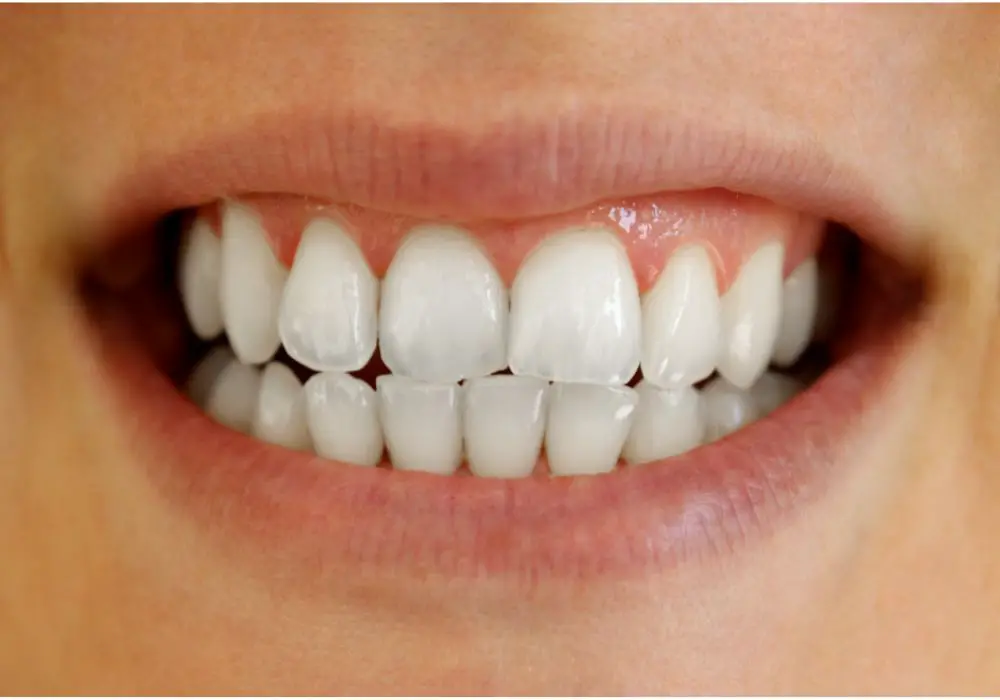
Treating cavities on front teeth aims to remove decayed material and restore the form and function of the tooth. Recommended treatments depend on the size and location of the cavity:
Small cavities
- Fluoride therapy: Applying fluoride varnish or gel helps remineralize early white spot lesions before they require a filling. This arrests the decay and can even reverse it.
- Composite resin fillings: Tooth-colored composite resins are the standard filling choice for front teeth cavities. The material bonds tightly to the tooth for a seamless, natural appearance.
Moderate cavities
- Composite resin fillings: As above, composite resins can fill cavities that have reached the dentin layer beneath the enamel. They provide excellent esthetics for front teeth.
- Porcelain fillings: Pricey but natural-looking, porcelain fillings are strong, durable, and stain-resistant. They withstand bite forces well for cavities on front biting surfaces.
Large cavities
- Dental crowns: If the cavity is very large, a porcelain or ceramic crown may be needed to rebuild the remaining tooth structure. Crowns fully encase the visible portion of the tooth.
- Root canal: If the cavity reaches the pulp and causes infection, root canal treatment will be necessary to save the tooth and relieve pain. A crown is typically placed afterward.
Severe decay
- Tooth extraction: When the tooth cannot be salvaged, extraction is required. It may be replaced with a dental implant or bridge. Proper care of neighboring teeth can help prevent the need for extraction.
- Catching decay early and maintaining diligent oral hygiene practices are key to avoiding invasive treatments. Regular dental checkups and cleanings allow problems to be found and resolved minimally.
Are there ways to prevent cavities on bottom front teeth?
Preventing cavities anywhere in the mouth requires a multipronged approach:
Brush twice daily with a fluoride toothpaste, taking time to thoroughly clean the front and back of all teeth. Angle the brush to reach the grooves on front teeth.
Floss once daily to remove plaque from between front teeth where cavities often lurk. Break up bacterial colonies before they can create damaging acid.
Limit sugary foods and drinks, which feed acid-producing oral bacteria. Avoid constant snacking and sipping throughout the day.
Use fluoride treatments like rinses, gels, or high-fluoride toothpaste as recommended by your dentist. Fluoride remineralizes enamel and fights decay.
Get dental cleanings and exams every 6 months to catch problems early when they are easiest to treat. Professional cleanings remove hardened plaque that brushing misses.
Watch for dry mouth symptoms and talk to your dentist about options if your saliva seems decreased. Drink plenty of water and limit caffeine and alcohol, which can dry out the mouth.
Consider dental sealants to protect deep grooves on front teeth from plaque and food. Sealants provide a smooth, sealed surface that is easy to clean.
With diligence and dedication to your oral wellness, you can maintain healthy and cavity-free front teeth for life! The investment of time pays off in preventing expensive and difficult treatments later on.
Frequently Asked Questions about Front Teeth Cavities
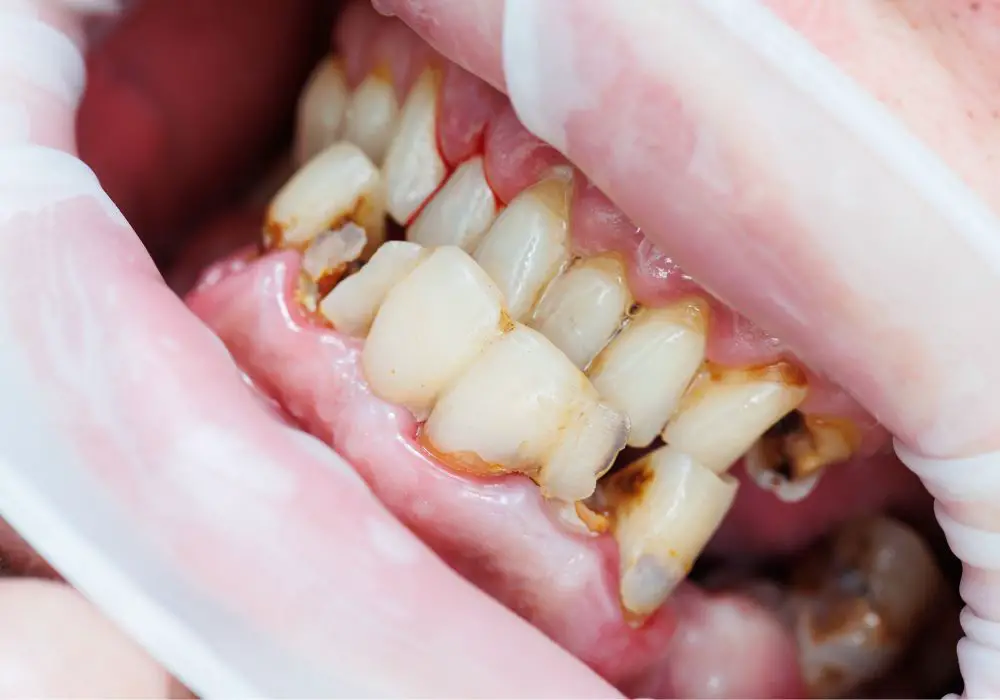
Here are some common questions and answers about cavities on front teeth:
Q: Are front teeth cavities more painful than back teeth cavities?
Front teeth cavities are often less painful in the early stages since front teeth have only one root versus multiple roots on back molars. However, as decay reaches the inner pulp, front tooth pain can become severe. Never ignore tooth pain.
Q: How can I tell if my tooth pain is from a cavity or something else?
Cavity pain is often triggered by hot, cold, or sweet foods. Other dental problems like a cracked tooth, abscess, or gum disease may cause constant, severe pain. Check for visible cavities, but schedule a prompt exam if you have any lingering oral pain or discomfort.
Q: Do cavities on front teeth need to be filled?
Yes, it is important to fill cavities on front teeth to prevent the decay from worsening over time. Untreated cavities can lead to infection, tooth loss, and cosmetic damage. Fillings repair cavities, strengthen teeth, and help you maintain your smile.
Q: Should I avoid smiling if I have a front tooth cavity?
You do not need to hide your smile if you have a small front tooth cavity. However, it is wise to avoid ignoring front tooth decay. See your dentist right away if you notice any discoloration or damage so treatment can begin. Addressing it quickly reduces the visible defect.
Q: Can I prevent my child from getting cavities on their front teeth?
Yes, teach your child good brushing and hygiene habits from a young age. Limit sugar, provide fluoride treatments, and start regular dental visits by age 1 or when the first tooth emerges. Addressing any white spots early can help baby teeth stay healthy and cavity-free. These habits will benefit their permanent smile too!
In Conclusion
Cavities on the bottom front teeth are not uncommon given their natural grooves and shape. With a cavity-promoting diet and poor oral hygiene, anyone can develop front tooth decay over time. But with diligent daily habits of brushing, flossing, and fluoride exposure, you can greatly reduce your risk of painful cavities on your front or back teeth. Be sure to see your dentist twice yearly for cleanings and checkups to catch any problems at their earliest, most treatable stages. With proper prevention and early intervention, you can keep your bottom front teeth strong, healthy and glowing for life!

